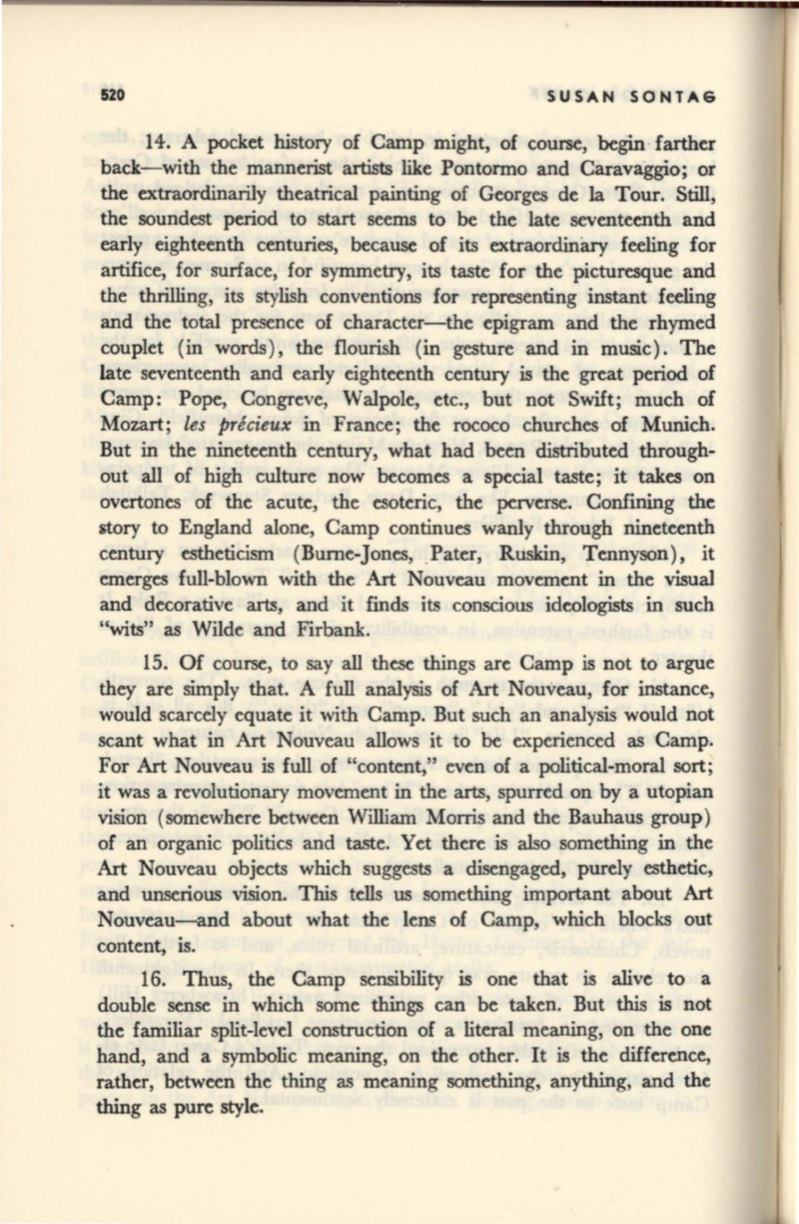

520
SUSAN SONTAG
14. A pocket history of Camp might, of course,
begin ·
farther
back-with the mannerist artists like Pontormo and Caravaggio; or
the extraordinarily theatrical painting of Georges de la Tour. Still,
the soundest period to start seems to be the late seventeenth and
early eighteenth centuries, because of its extraordinary feeling for
artifice, for surface, for symmetry, its taste for the picturesque and
the thrilling, its stylish conventions for representing instant feeling
and the total presence of character-the epigram and the rhymed
couplet (in words), the flourish (in gesture and in music). The
late seventeenth and early eighteenth century
is
the great period of
Camp: Pope, Congreve, Walpole, etc., but not Swift; much of
Mozart;
les precieux
in France; the rococo churches of Munich.
But in the nineteenth century, what had been distributed through–
out all of high culture now becomes a special taste; it takes on
overtones of the acute, the esoteric, the perverse. Confining the
story to England alone, Camp continues wanly through nineteenth
century estheticism (Burne-Jones, Pater, Ruskin, Tennyson), it
emerges full-blown with the Art Nouveau movement in the visual
and decorative arts, and it finds its conscious ideologists in such
"wits" as Wilde and Firbank.
15. Of course, to say all these things are Camp
is
not to argue
they are simply that. A full analysis of Art Nouveau, for instance,
would scarcely equate it with Camp. But such an analysis would not
scant what in
Art
Nouveau allows it to be experienced as Camp.
For
Art
Nouveau is full of "content," even of a political-moral sort;
it was a revolutionary movement in the
arts,
spurred on by a utopian
vision (somewhere between William Morris and the Bauhaus group)
of an organic politics and taste. Yet there is also something in the
Art
Nouveau objects which suggests a disengaged, purely esthetic,
and unserious vision. This tells us something important about
Art
Nouveau-and about what the lens of Camp, which blocks out
content, is.
16. Thus, the Camp sensibility is one that is alive to a
double sense in which some things can be taken. But this is not
the familiar split-level construction of a literal meaning, on the one
hand, and a symbolic meaning, on the other. It
is
the difference,
rather, between the thing as meaning something, anything, and the
thing as pure style.









